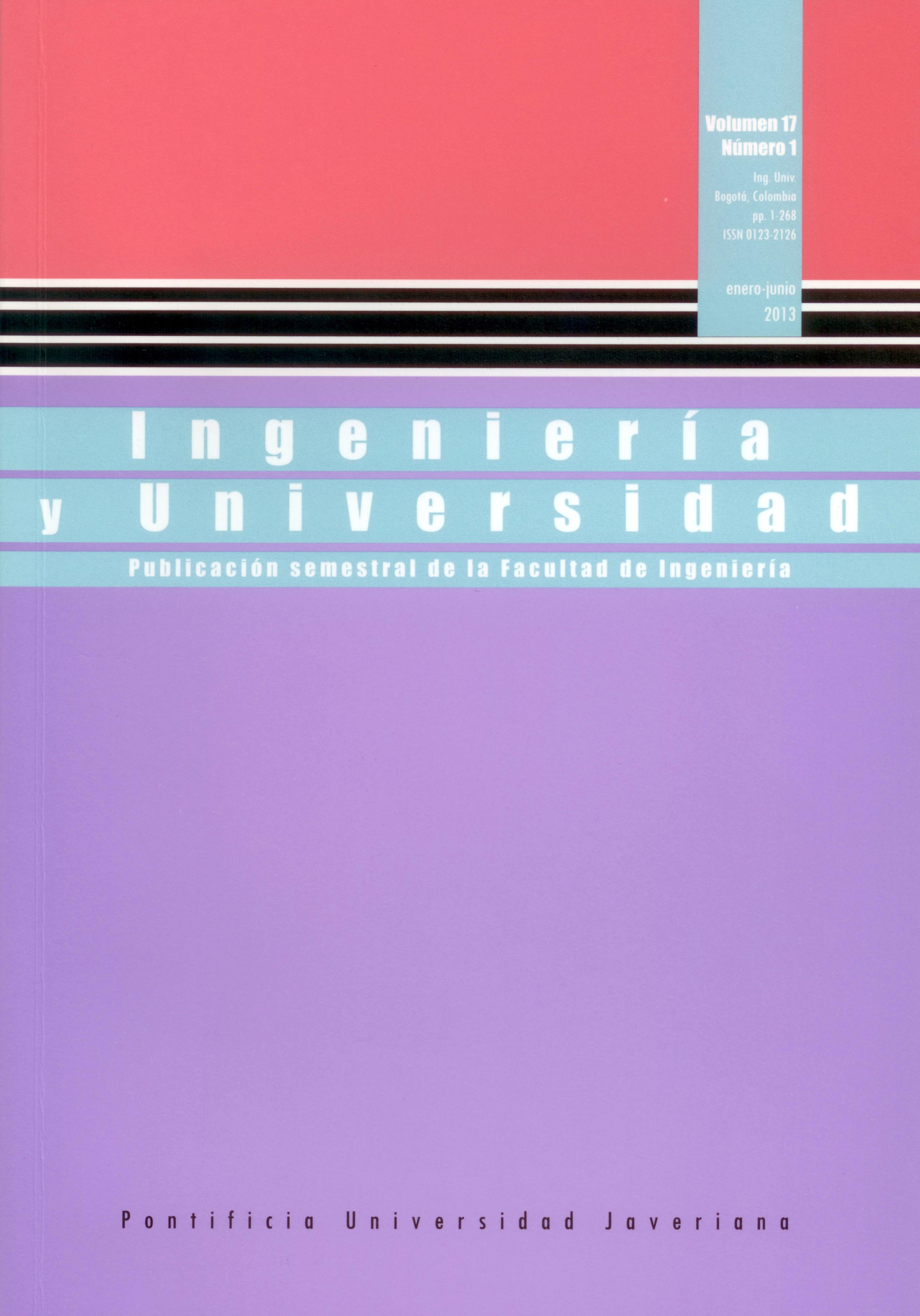Abstract
This paper proposes a method involving interdisciplinary participation with the purpose of identifying users’ needs and analyzing the commercial competition for support products for disabled people. This method joins together quality function deployment (QFD) and Analytical Hierarchy Process technique (AHP). The method was applied to the evaluation of products in support of mobility (ISO9999: 2007) for people with lower limb disability, in order to favor their social inclusion in the city of Cali, Colombia. The users’ opinions were collected through a poll that followed the principles of the International Classification of Functioning, Disabilityand Health. It was concluded that the use of QFD and AHP with interdisciplinary teams is more reliable when considering users’ needs than the use of the simple weighing method proposed by QFD and some of its variations. The application of QFD from the perspective of users favors radical innovation and not justa specific product.
AKAO, Y. Quality function deployment. Cambridge (MA): Productivity Press, 1990.
CARNEVALLI, J. y CAUCHICK, P. Review, analysis and classification of the literature on QFD. International Journal of Production Economics. 2008, vol. 114, núm. 2, pp. 737-754.
CHAN, L. K. y WU, M. L. A systematic approach to quality function deployment with a full illustrative example. Omega-The International Journal of Management Science. 2005, vol. 33, núm. 2, pp. 119-139.
FUJITA, K. y MATSUO, T. Utilization of product development tools and methods: Japanese survey and international comparison. International Conference on Engineering Design, Melbourne, 2005.
GONZÁLEZ, M.; AGUILAR, J.; CÓRDOBA, L.; CHAMORRO, C.; HURTADO, N.; VALENCIA, A. y VALENCIA, M. Equipos multidisciplinares en el diseño de productos de apoyo para personas con discapacidad. Revista Ingeniería e Investigación. 2009, vol. 29, núm. 3, pp. 142-147.
GONZÁLEZ-BOSCH, V. y TAMAYO, F. Asociación Latinoamericana de QFD, México. 2000.
HURTADO, M.; AGUILAR J.; MORA, A.; SANDOVAL C.; PEÑA C. y LEÓN A. Identificación de las barreras del entorno que afectan la inclusión social de las personas con discapacidad motriz de miembros inferiores. Cali: Pontificia Universidad Javeriana Cali, 2010.
INSTITUTO DE BIOMECÁNICA DE VALENCIA: IBV. Tecnologías al servicio de las personas con discapacidad y las personas mayores. Valencia:IBV, 2004.
MARSOT, J. QFD: a methodological tool for integration of ergonomics at the design stage. Paris: French National Research and Safety Institute, 2004.
MASUI, K.; SAKAO T.; KOBAYASHI, M. e INABA, A. Applying quality function deployment to environmentally conscious design. International Journal of Quality and Reliability Management. 2003, vol. 1, núm. 20, pp. 90-106.
MORENO, J. AHP: fundamentos, metodología y aplicaciones. Madrid: ASEPUMA, 2002.
ORGANIZACIÓN MUNDIAL DE LA SALUD (OMS). Clasificación Internacional del Funcionamiento, de la Discapacidad y de la Salud: CIF. Madrid: Imserso, 2001.
QIAO, M. The effectiveness of requirements prioritization techniques for a medium to large number of equirements. School of Computing and Mathematical Sciences [documento en línea]. 2009. <http://aut.researchgateway.ac.nz/bitstream/handle/10292/833/MaQ.pdf?sequence=3>
SAATY, T. L. The analytic hierarchy process. New York: McGraw-Hill, 1980.
TAMAYO, F. y GONZÁLEZ, V. Prioritizing customer needs at spectator events: obtaining accuracy at a difficult QFD arena. Journal of Quality & Reliability Management, 2004, vol. 4, pp. 145-154.
TSAI, K.; YEH, C.; LO, H. y LI, C. Application of quality function deployment in design of mobile assistive devices. Journal of Medical and Biological Engineering, 2008, vol. 28, pp. 87-93.
URANKAR, S. y ROOSMALEN, L. Design criteria for a wheelchair integrated pelvic restraint device. Pittsburgh: University of Pittsburgh, 2005.
USMA, C.; SUBIC, A. y BURTON, M. Identification of design requeriments for Rugby weelchairs using the QFD method. School of Aerospace. Melbourne: RMIT University, 2010.
WANG, H., XIE, M. y GOH, T. N. A comparative study of the prioritization matrix method and the AHP technique in QFD. Total Quality Management. 1998, vol. 9 núm. 6, pp. 421-430.
XU, Z. On consistency of the weighted geometric mean complex judgement matrix in AHP. European Journal of Operational Research. 2000, vol. 126, pp. 683-687.
YACUZZI, E. y MARTÍN, F. QFD: Conceptos, aplicaciones y nuevos desarrollos. CEMA Working Papers: Serie Documentos de Trabajo. Universidad del CEMA, 2003.
This journal is registered under a Creative Commons Attribution 4.0 International Public License. Thus, this work may be reproduced, distributed, and publicly shared in digital format, as long as the names of the authors and Pontificia Universidad Javeriana are acknowledged. Others are allowed to quote, adapt, transform, auto-archive, republish, and create based on this material, for any purpose (even commercial ones), provided the authorship is duly acknowledged, a link to the original work is provided, and it is specified if changes have been made. Pontificia Universidad Javeriana does not hold the rights of published works and the authors are solely responsible for the contents of their works; they keep the moral, intellectual, privacy, and publicity rights.
Approving the intervention of the work (review, copy-editing, translation, layout) and the following outreach, are granted through an use license and not through an assignment of rights. This means the journal and Pontificia Universidad Javeriana cannot be held responsible for any ethical malpractice by the authors. As a consequence of the protection granted by the use license, the journal is not required to publish recantations or modify information already published, unless the errata stems from the editorial management process. Publishing contents in this journal does not generate royalties for contributors.


